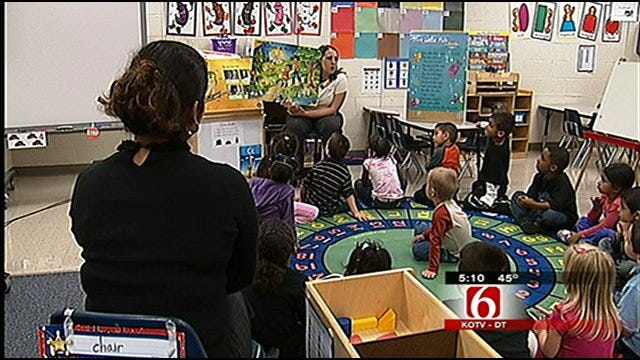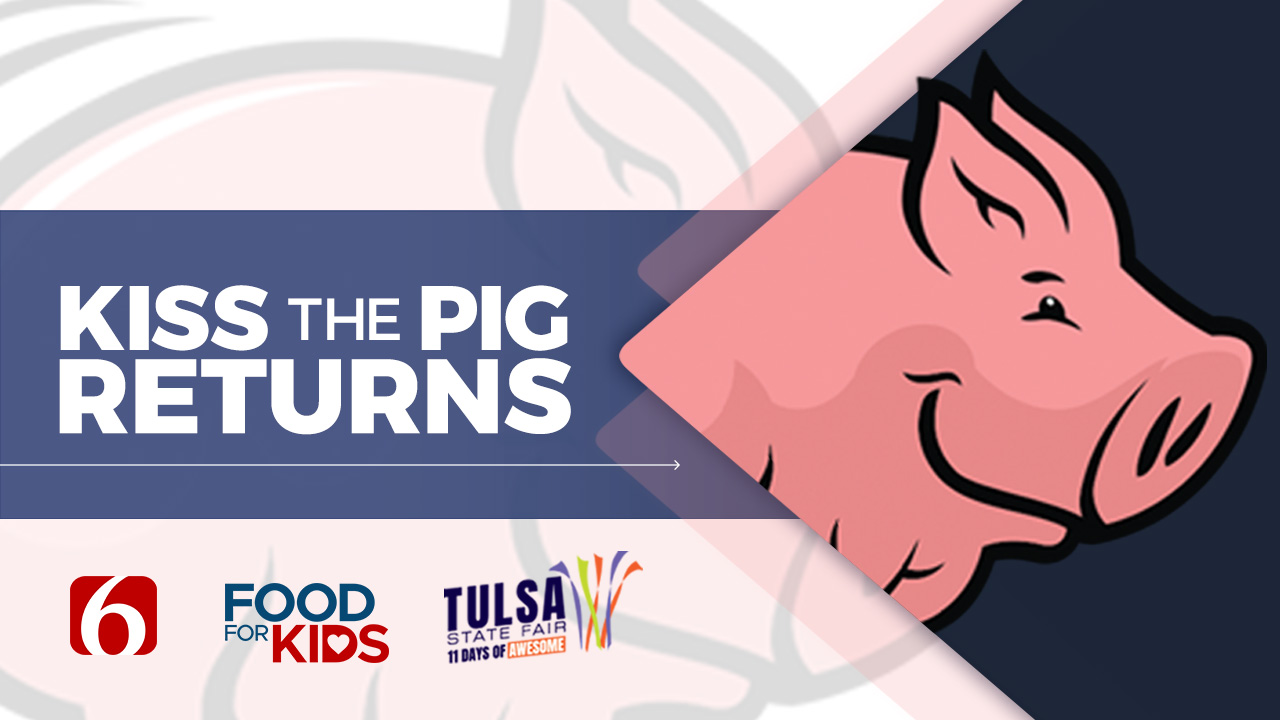Oklahoma Gets An 'A' In Early Childhood Education, But An 'F' When It Counts
Oklahoma is recognized nationally as standing tallest in the realm of early childhood education. Sadly, Oklahoma's standing in the realm of actual student achievement is not nearly as high.Thursday, November 18th 2010, 7:27 pm
Alex Cameron, Oklahoma Impact Team
OKLAHOMA CITY -- In his 2006 State of the State address, Governor Brad Henry conveyed a message that was already ingrained in the minds of most Oklahomans:
"Education experts across the nation," the governor stated, "continue to recognize Oklahoma's early childhood education as the very best."
Since then, similar statements have been repeated with regularity by Governor Henry, the Lieutenant Governor, the State Superintendent of Education, and most every other elected official needing something positive to say about the state of education in the state.
And, by all accounts, it's true.
With laws mandating funding for all-day kindergarten, universal pre-kindergarten (full or half-day), and the requirement that early childhood teachers be certified, Oklahoma is recognized nationally as standing tallest in the realm of early childhood education.
Sadly and, perhaps paradoxically, Oklahoma's standing in the realm of actual student achievement is not nearly as high.
The most recent National Assessment of Education Progress (NAEP) fourth grade reading and math scores show that the scores of Oklahoma fourth graders, relative to the national average, have declined over the roughly ten-year period since the state became the leader in early childhood education.
How can this be?
There have been numerous studies (including a 2004 Georgetown University study conducted in the Tulsa Public School district) that show a direct correlation between enrollment in a pre-kindergarten class and improved language and pre-math skills. The studies are unambiguous in concluding that a child who attends pre-school in Oklahoma is more ready to learn upon entering kindergarten than a child who has not had attended pre-school. Read more on the studies.
That conclusion is also supported anecdotally.
At Tulsa's ECDC Reed (one of two early childhood development centers in the district), four year olds fill every classroom. In between making sure the kids move through their stations and leading them in a clean-up song, one teacher testifies about the impact of pre-K on her kids.
"The children that attend pre-K tend to be more successful in Kindergarten," said Emily Tamez, a former kindergarten teacher who is in her first year of teaching pre-K.
Kindergarten teachers say they can almost always tell which of their students have been through pre-K.
"They come in knowing so much more," said Debbie Buchanan, "There aren't the big haves and have-nots."
And yet test scores indicate the benefit doesn't last.
"That's the frustrating part," said Andy McKenzie, Tulsa Public Schools' Assistant Superintendent for Early Childhood Services, "We make those gains in one year...and yet they aren't sustainable, there's that fade-out."
Beatriz Santillan knows that firsthand. Santillan's daughter attended a pre-kindergarten class near her northwest Oklahoma City home. She's now a third grader at the same school, Sequoyah Elementary. Her mother said like other Hispanic children in the district, she is finding language to be a barrier to success.
"Yes," Santillan explained, "because sometimes she has problems with reading."
Santillan, who is taking English language classes at OSU-OKC, is sending her daughter to a tutor once a week and works with her extensively at home. Santillan knows that her own English language limitations are themselves a barrier.
Through a translator, she explained that the problem is worse in homes where English isn't spoken at all.
"A lot of the parents don't understand English," said Santillan, "Don't know how to read, and can't help the kids with their homework or their reading at home. That's why a lot of [their kids] struggle."
In terms of ethnicity, Hispanic students now make up the largest segment of the student body in the Oklahoma City Public School District. The extent to which the increase in the Hispanic student population may be contributing to the state's lagging test scores isn't clear, but it's clear that test scores are not where district officials would like them to be.
In the Tulsa Public School District, the most recent state report card showed 45 percent of fourth graders reading below grade level. In Oklahoma City public schools, it's 54 percent.
OKCPS Superintendent Karl Springer said those numbers are very much a concern: "Absolutely, they haunt me."
Those numbers haunt Springer and other educators because they know the tragic statistics that accompany them. They know there's a 50-50 chance that a student who can't read by the end of third grade will not graduate from high school. In states like California, they determine the number of prison beds the state will need in the future based on the number of kids who can't read at the end of third grade.
Overcoming ethnic and language barriers may be part of the solution to getting more kids reading at grade level, but some feel that lessening the power of the teachers union is just as important, if not more so.
Bob Ross, chairman of the Oklahoma City Public Schools Foundation, said the union has successfully lobbied lawmakers and policy makers so that their focus is on supporting teachers rather than on addressing the needs of today's students.
"Yes, we're very successful in pre-kindergarten," Ross said, "But there is a breakdown, and the breakdown, to me, is pretty simple-- we focus on adults and not students."
Janet Barresi, who will succeed Sandy Garrett in January as State Superintendent of Public Instruction, has similar sentiments. She said there must be greater focus on students, and that we won't get the full benefit of the state's top-ranked pre-K system until K-12 teachers are told it's okay to veer from prescribed teaching formulas and address the individual needs of struggling students.
"We need to free them up," Barresi urged, "and give them the autonomy to use the skills that they have to reach those children, and to differentiate...to a child's learning styles."
School reform is complicated and may take many years to implement.
A possible factor in the state's poor test scores that is far less complicated is the fact that there are still many parents who still don't have the option of enrolling their four year old children in a pre-K class. In others words, 'universal' pre-K -- as called for under the law -- is not yet truly universal.
Superintendents cite a lack of classroom space and a lack of funding to purchase needed classroom materials as reasons they have not been able to fully implement pre-school in their districts. Statewide, about 30 percent of four year old are not enrolled in any type of pre-K program; in Oklahoma City, the number is 40 percent.
"Superintendent Springer said that will soon change: "We now have a plan to expand our program by about thirty teachers every year for the next four years."
Springer said they will need to financial assistance to be able to add so many classrooms, but he expects that private entities, such as the Inasmuch Foundation, will come through for them.
There's no general agreement as to whether truly universal pre-K will boost student test scores. But there is agreement that, without the state's early childhood system, incomplete though it may be, test scores would definitely be worse.
More Like This
November 18th, 2010
January 2nd, 2025
September 29th, 2024
September 17th, 2024
Top Headlines
March 14th, 2025
March 14th, 2025
March 14th, 2025
March 14th, 2025













